|
10th March 2020 Tuesday is here and we're at 'The Sovereigns in Woking with the Gaming Club. The first game of the evening was 'Quacks of Quedlinburg'. Quacks of QuedlinBurg is not a game about ducks as I thought when I first heard the name. It's actually a push your luck game about disreputable, dangerous, deplorable and downright dishonest doctors. Actually YOU play the quacks in question trying to create the most amazing and wondrous potions. Amazing and wondrous that is, until they blow up in your face. What's in a game? Quacks of Quedlinburg has quite a few components, there is a game board and personal game boards. There are also tokens - and lots of them too, as they are the most important component of the game.
That the player boards look like pots, flask tiles look like potion bottles and ingredient tiles look like ingredient books shows that some thought, effort and care has been put into the their design. How's it play? Setup.
Quacks of Quedlinburg is played over 9 rounds and something new or different is introduced over several of the rounds.
When players are drawing ingredients from their bag. They can use their flask to return the token to the bag - provided they had not gone bust because of the token. Endgame Play continues normally until the start of the 9th round. The final round is a little different. When drawing a token from their bags, each player keeps the token in a closed hand and every player opens their hand at the same time. When a player wants to stop drawing tokens they simply keep their empty hand closed until it's time to reveal it. After that they drop out of further rounds of drawing ingredients. The phases for spending coins on ingredients and rubies on the droplet/flask are ignored because they are pointless at the end of the game. Instead; every 5 coins and/or 2 rubies will earn the player a victory point. After this, victory points are tallied, highest score wins. Overall
Quacks of Quedlinburg is a fairly easy game to learn and easy to play. It moves along briskly too as there's very little downtime and it doesn't outstay its welcome as it's finished after 9 rounds. When I played it, it felt like a lot was occurring in a short game time. Pulling ingredients out a bag to put into a pot is a brilliant use of the 'push your luck' mechanic. It fits the game perfectly and surprisingly makes it a lot of fun. Additionally; unlike most 'push your luck' games, going bust does not totally kill a player's turn, they still reap some of rewards of their potion making and they can still carry out most of the other actions. The engine building mechanic works well too, as players introduce tokens into their bags, it makes going bust a little harder, giving players longer more productive turns. Combined, the 2 game mechanics always gives the player meaningful and interesting decisions to make, when to and when not to push your luck? What ingredients to buy? And so on. I liked it and will definitely play it again.
0 Comments
29th October 2019 Tuesday night at 'The Sovereigns' in Woking and it's game night at the Woking board game club. We started the evening with 'Heckmeck' AKA 'Pickomino'. Have you ever wondered what is a chicken's favourite food? It turns out that a chicken's favourite food is worms. But not just any worms, but roast worms! And not just any roast worms either, but BBQ roast worms! How many BBQ roast worms does a chicken like eating? As many as it can get. How does it get as many BBQ roast worms as it can? By pushing it's luck of course! That's what Heckmeck is about. Pushing your luck to accumulate as many BBQ roast worms as possible. What's in a game? There are 2 versions of Heckmeck, standard and deluxe. We played the standard version of the game. They use the following components:
How's it play? First there's setup.
The goal in Heckmeck is to roll and accumulate dice to get a score high enough to claim a domino. But here's a twist, at least one of those dice must have a worm result. How's this done? Keep reading.
Stacking is one of the things that makes Heckmeck stand out.
Like stacking, stealing is something I've not seen in a push your luck game before.
Endgame Play continues until there are no more face-up dominoes in the supply to collect. Players tally the worms they've collected, highest number of worms wins. Overall
Heckmeck is easy to learn and fairly quick to play. It has several excellent mechanics that give players tricky decisions to make. Choosing which sets to keep is crucial because of it 'locks out' numbers. Do you really want to take that single 5, because that means you can no longer get any more 5s. Decisions, decisions. The worm mechanic is also cool. Needing to have a worm result is an extra thing that can go wrong. Making a worm worth a 5 is genius, it puts players in the same quandary as rolling a 5. If a worm was only worth 1, taking it when it's only 1 worm would be a no-brainer. Finally, the stacking and stealing together is another great idea. If players just laid their tiles out in a line, then stealing them would be a bit too easy as the choice would be wider. However, since the dominoes are stacked, stealing is uncommon. When it does occur, it's something that should be taken advantage of! All of this adds up to make a good push your luck game. Heckmeck has very quickly become a favourite with nearly everybody I play it with. And deservedly so. 24th September 2019 Tuesday night gaming at 'The Sovereigns' in Woking continues. The second game of the evening was 'Bang! The Dice Game'. A hidden role game driven by push your luck mechanics. Let's see how this goes? What's in a game? Bang! The Dice Game comes in a small portable package. Components include:
How's it play? First there's set up.
What are the hidden roles? There are 3 types of hidden role in the game. The number of each role that appears in a game will depend on the number of players, except there is only ever 1 sheriff.
And we're good to go. Playing the game is quite straight forward.
Dice and their meanings
So we now know what we do with the dice. But what do they mean. The 5 custom dice all have the same symbols on their faces instead of numbers.
But what about the arrows? There are 9 arrow tokens in the supply, when the last arrow has been taken by a player; then Indians Attack! When this happens, characters immediately take damage equal to the number of arrows in their personal area. Then all the arrows are returned to the central area. Overall Bang! The Dice Game is a little unusual for a hidden role game. There is very little need for questioning amongst players. As is the fact that one role is revealed to all players, putting a big target on the sheriff player's back! The deputy players and possibly renegade players will need to protect the sheriff. That's not the sheriff's only problem, the sheriff needs to figure out who is an ally and who is an enemy and not attack their deputies. Deputies need to identify other deputies if possible (If there are other deputies). But their 2 main objectives are protect the sheriff and attack anyone attacking the sheriff. Outlaws have it easy really, they can concentrate on attacking the sheriff. Outlaws can try a protect other outlaws, but well they're outlaws! Renegades are in a tricky position, they want to get rid of the sheriff, but need to eliminate outlaws first. Bang! The Dice Game is a 'lighter' hidden role game and is quick to learn and play. It serves well as a filler game. 9th July 2019. Tuesday is here and so is gaming night at 'The Sovereign' in Woking. Elder Sign is a co-operative game where the players take on the role of intrepid investigators, driven to uncover the conspiracies that will bring about the end of the world without descending into mind-shattering insanity. What's in a game? Elder Sign is a push your luck game with some dice and a lot of cards.
Investigators Investigator's have 2 stats, health and sanity. You don't need me to tell you what happens if either reaches 0. Investigator's also have a unique special ability each and some starting equipment. Ancient one The ancient one card contains some pertinent information. There's a timing track that shows how close the ancient is to appearing. There's also information on what happens if the ancient one appears and how to fight it. There's a 'elder sign' track. If the players accumulate enough elder signs, they can prevent the ancient one even appearing. Location cards Location cards contain multiple tasks. These take the form of rows of symbols (That match the symbols on the dice). Each location card lists 'rewards & penalties'. One of the location cards is the 'museum entrance'. Characters can be placed on this location card to rest & recuperate. How's it play?
Before playing, a little setting up needs to be done.
The basic premise of the game is that the investigators complete the tasks on the location cards and to earn resources and elder signs. These can be used to win the game. But in the meanwhile, the clock is ticking... When a player has their turn; they move their marker to a location card and try to complete one of the tasks on the card. Each task will contain a number of symbols. The active player rolls the dice, any of the dice results that match the symbols for the current task are placed on to that task on the card. If all of the symbols are matched by dice results, then that task is completed. If the task is not completed, the player has the choice to fail the task or continue rolling. If the player chooses to continue rolling, they take the remaining unmatched dice -and discards one- and rolls them again. Thus repeatedly reattempting a task will eventually deplete a player's dice. If a player is ever in a situation where they do not have enough dice to complete a task, then they fail that task. When a task is failed, voluntarily or otherwise. Then the active player suffers the penalties listed on the location card. If a task is failed and a 'terror' result has come up on the dice, then the active player suffers an additional penalty. When a task is completed, all the dice are returned to the active player. If another task is available on the location card, then the active player may attempt to complete it. If all of the tasks on a location card have been completed, then that location has been completed! The active player takes the listed reward and returns to the entrance. When a player completes their turn, the clock advances. When the time reaches a certain point, it will cause the ancient evil to be spawned. There are more rules: There are rules for suffering terror. Rules for monster appearing. Rules for using weapons, equipment and spells. Rules for going into otherworldy locations. Rules for clues. Rules for environmental effects that affect the game and so on. Endgame If the players accumulate enough elder signs, they win the game. If the ancient one appears, then the players must battle it. This involves rolling dice much like completing tasks. If the players succeed, then the ancient one is vanquished. If they fail to defeat the ancient one, then the players all fail and it's curtains for the earth! Overall Elder Sign is a push your luck game. I played for the first time a few years ago with 2 other players and found it a hugely frustrating experience. However, when I played it recently with 5 other players, it was a lot less frustrating. I guess watching other players getting luck as bad as mine is cathartic! As a co-operative game about struggle against cosmic horror, Elder Sign is an OK game. It handles its theme well enough as you investigate the museum looking for ways to impending doom against the clock. But I have small issue with the push your luck mechanic of Elder Sign. With a push your luck game, you need a reason to 'settle' and a reason to... well 'push your luck'. The priorities of these reasons may shift according to the situation, but they need to always be there. But when playing Elder Sign, sometimes it feels like that it's pointless to settle. Player's will suffer the same penalty, regardless of whether you choose to fail or are forced to fail. You only risk suffering terror if you push your luck - and that's not guaranteed. So it feels like there's little reason to not push your luck. It's a small criticism, I know. So would I play Elder Sign again? Going by past experience, I feel the game gets better with more play (Although that's true of the majority of games IMHO.) and Elder sign goes up to 8 players! So with 4+ players, I would try it again. 29th June 2019
Gaming afternoon continues at 'The Sovereigns' in Woking and we concluded with 'Tiny Epic Galaxies'. I've written about Tiny Epic Galaxies before here. 23rd June 2019.
Gaming day continues at 'The Sovereigns'. The next game of the day is 'Celestia'. Celestia is very similar to another game called 'Cloud 9', in fact both games are designed by the same person. You can see my thoughts on Cloud 9 here. Celestia is a fantasy-themed push your luck game about making a journey. What's in a game? Celestia contains a skyship placing piece that needs to be built. Annoyingly, when constructed, it does not fit in the game box! This means it must be constructed before and then deconstructed after every game session. Otherwise it's quite a nice prop for the game. There are is a set of 'city' markers and several sets of small decks of 'treasure' cards for each of the cities. There is also an 'equipment' deck of cards used to 'travel' in the game. Most of the cards in the deck contain symbols identical to those from on the dice (See below.). Some cards are 'power' or 'turbo' cards that give a different benefit. There are 'event' dice; these are 4 custom six sided dice used to represent obstacles or events that must be overcome during the journey. Each die is identical and has 4 custom symbols on 4 sides and blank faces on 2 sides. And finally there are 6 meeples for the players. The components are pretty standard. But I feel I must add that the art on all of the cards and markers is excellent. How's it play Before play begins, the cities markers are set out in a specific order (From lowest to highest scoring.). Then the associated smaller treasure decks are placed next to each city marker. The purpose of the game is to reach the last city (If possible.) to score maximum points. But if the skyship crashes along the way, then no points are scored by the passengers. Players will be given the choice to abandon the skyship early and earn less points. This is how play goes.
Endgame. When a journey ends for whatever reason and before another begins: If one or more players have accumulated 50 or more points, they must declare it. Then all players tally their points, highest score wins. Overall Celestia is an easy to play and accessible push your luck game. It is a competitive game, but there are elements of co-operative play here. Because to reach the further destinations you will likely need other players to co-operate with you. This is doubly true if one player is rushing ahead in the scoring. Comparisons with Cloud 9 are inevitable, they are both very similar, with similar strategies and mechanics. But Celestia has a few tweaks that gives it a bit more depth. Firstly, in the equipment deck, the 4 different types of card required to overcome obstacles from the event dice are not represented in equal numbers. This means it's less likely that certain cards will be dealt into players' hands. And this means that certain types of obstacles are harder to overcome. It's something to pay attention to. Secondly, some of the power cards allow you to mess with the other players. Although in this game it seems strangely antagonistic. I've rarely seen these types of card used, possibly because of hidden scores means it's hard to know who to target. And finally, hidden scores. In Cloud 9, there is a scoring track, so when a player reaches 50+ points, everyone else knows they need to push it in order to have a chance of winning. But in Celestia, with its hidden scores you can never know exactly what another player's score is. You can't afford to be complacent and need to keep accumulating your score. It doesn't take too long to play either, meaning that it's a nice filler game. It's one to play. 11th June 2019. Tuesday is here and we find ourselves at 'The Sovereigns' in Woking for Tuesday night gaming. Whilst waiting for other people to turn up we decide to play a quick opener. This quick opener is 'Deep Sea Adventure'. Originally my initial post about Deep Sea adventure was published as part of a blog post about a different game. So I am going to re-post my thoughts about Deep Sea Adventure below. in Deep Sea Adventure each player is a treasure-hunting diver who is looking to score big. The game is played over 3 rounds and the player with the most valuable treasures after the end of the 3rd round is the winner. Deep Sea Adventure packs a whole lot of push-your-luck fun into a little box. Whilst this is a competitive game, it sneaks a co-operative little mechanic into the rules which in turn players can try to twist to their own advantage. The game begins with all the players' meeples in a submarine. Beneath the sub is a winding trail of face down markers. Each marker represents a treasure that can be collected by a diver. The value of the treasures also vary, but the deeper you dive, more valuable the treasure. The more sides a marker has, the more potential value it has. Play goes like this:
And that's it, that's it for the rules. Ok, there's a bit more.
And that really is it for the rules. Deep Sea Adventure is all about pushing you luck. Pushing your luck in picking up treasures (so tempting to pick up one extra treasure, just one little treasure - it won't make much of a difference, right). Pushing your luck in movement. The hop mechanic can prove helpful or can push you way too deep into the depths. Finally, pushing your luck with the communal oxygen supply. This is the game's best mechanic. This is what turns it from a 'OK' game into a 'good' game. The communal oxygen means that you have watch what the other players are picking up. It forces you to try and think a whole round ahead. When playing Deep Sea Adventure, there comes a point when oxygen starts to matter. For a couple of turns, no one picks up treasure. Everyone wants something a little better and is willing to dive a little deeper to get it. But then, it all changes, as treasures are picked up, oxygen is used up. The change may seem quite subtle, but can actually be quite dramatic. No oxygen being used, to suddenly 4-5 every round. Being able to spot and react to this change is key to winning in my opinion. In a six player game, at some point every player will have picked up at least one treasure, that means six points of oxygen will be used up before your next turn. That's about a quarter of all the available oxygen. Some players will try and load themselves with treasures to burn up oxygen as they return to the sub, (this is in itself a risky strategy as it also slows movement - several times I've seen loaded down players one or 2 spaces away from the sub and not move at all until the oxygen runs out). All of this means that you can never be complacent about the oxygen supply and this Deep Sea Adventure is good fun and a good game. 17th April 2019 It's 'kebab night' round at my place. What's kebab got to do with gaming? Well Matt has bought his copy of Kingsburg round to my place for us to play we did! Kingsburg is a dice/worker placement game where each player has their own board to track personal advances. It is a fantasy themed game that casts the players as provincial advisors who are seeking to influence the king, battle with invading armies and gain personal power. Kingsburg is played over 5 'game' years and each year has 4 seasons and 4 'inter-seasonal' phases as well. So a total 40 'phases'. Although in reality players only get to do stuff in 3 seasons a year. So players only get 15 'actions' per game. What's in the game? Province Sheets Each player gets their own individual game board called a 'Province Sheet' that tracks their individual developments and advances. These all take the form of buildings that the player can construct. These can provide the player with victory points or other benefits. They give Kingsburg a slight engine-building mechanic, buildings give players little advantages here or there and buildings can also play off other buildings in your province for better advantages. Each player is also given their own coloured set of 3 six-sided (3d6) dice. The Game Board The main game board tracks various elements of the game. Score, military strength, turn order, year and phase and so on. There are also 18 spaces. Each space represents a different advisor and is numbered from 1 to 18. Is that a normal amount of advisors for the king of a fantastical medieval kingdom? I guess so. Each space also generally has one or more resource markers on it. Resources include, gold, stone, wood and military strength. How does it play? Each year is divided up into 8 phases. I'll describe the even phases and then the season phases - 3 of which basically function identically. Phases 1, 3, 5 & 7 are events. Phases 2, 4, 6 & 8 are spring, summer, autumn and winter respectively. Player actions all occur in the first 3 seasons. Something different occurs during winter. During winter... there is war. Which is about the stupidest time to wage war. Maybe the designers are fans of Game of Thrones (Urggh, felt a little dirty mentioning that!)
Seasons
And that's it for a general overview of the rules. As always I've left some stuff out. How does it play?
Well... Well it plays... OK. I'm trying to think of something I liked about Kingsburg and something I hated. I came up with zero for both. It's just... sort of... OK. So the central mechanic is interesting, but seems quite weird. Being quite luck based, sometimes it could be infuriating. But conversely (and strangely), frequently it would feel like it didn't matter what I rolled, because there would be multiple routes to get what I needed. I found this strange mix of sometimes needing luck and sometimes luck not mattering not very compelling. Constructing a building doesn't feel like an accomplishment much of the time, nor does it feel like the bonuses it grants change the game much. It's fairly straightforward to construct the first and maybe second buildings in a row, but because of the slightly haphazard way in which you gain resources, planning for the buildings further along is much trickier and your well-laid plans can easily be scuppered by a bad dice roll. The later buildings can be much more useful, but by the time you get to building them, the game will 80% over, thwarting their usefulness. You really need to plan to get these buildings, but the game seems to scupper plans. Quite often your forced to choose between trying to save resources for even longer to get a building, or giving up on it and getting something else instead. Choice is always good as I've said in this blog before. But the choices here tend to be about choosing between the least undesirable option. It feels negative and leaves a little bitter taste in the mouth. War in the winter season seems not so well thought about. Quite often I would completely ignore/forget about it and the dice roll alone was enough to defeat enemies in the first couple of years. During the 3 other seasons, you would probably get some military strength as a by product of playing. So I never felt the need to invest in military strength. Overall, I don't think Kingsburg is a bad game by any stretch and if asked if I wanted to play it, I wouldn't immediately say 'no'. But I might ask what else they had to play. 9th April 2019
Tuesday has come around again, so it's time for some gaming at 'The Sovereigns' in Woking. Perennial favourite amongst many people I play with and a good starter for the evening is Port Royal. You can read my blog about it here. 2nd April 2019
The second game of Tuesday at 'The Sovereigns' was an old favourite - Port Royal. You can read my blog about it here. |
AuthorI play, I paint. Archives
March 2024
Categories
All
|

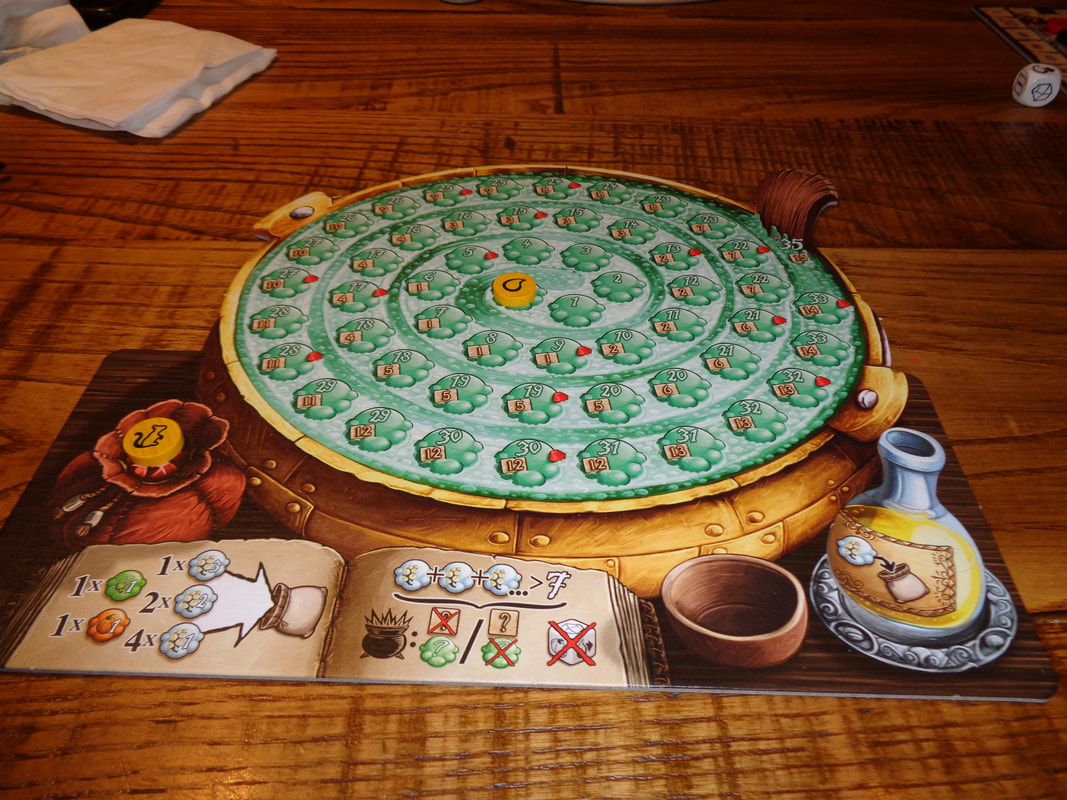
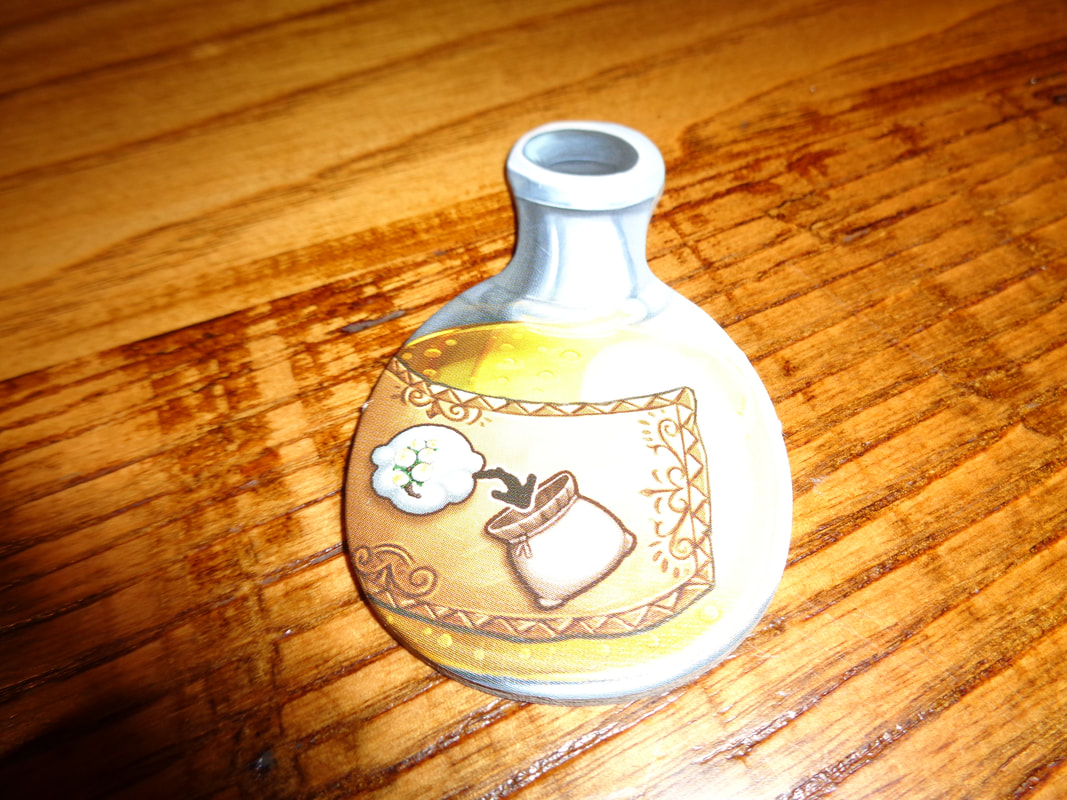
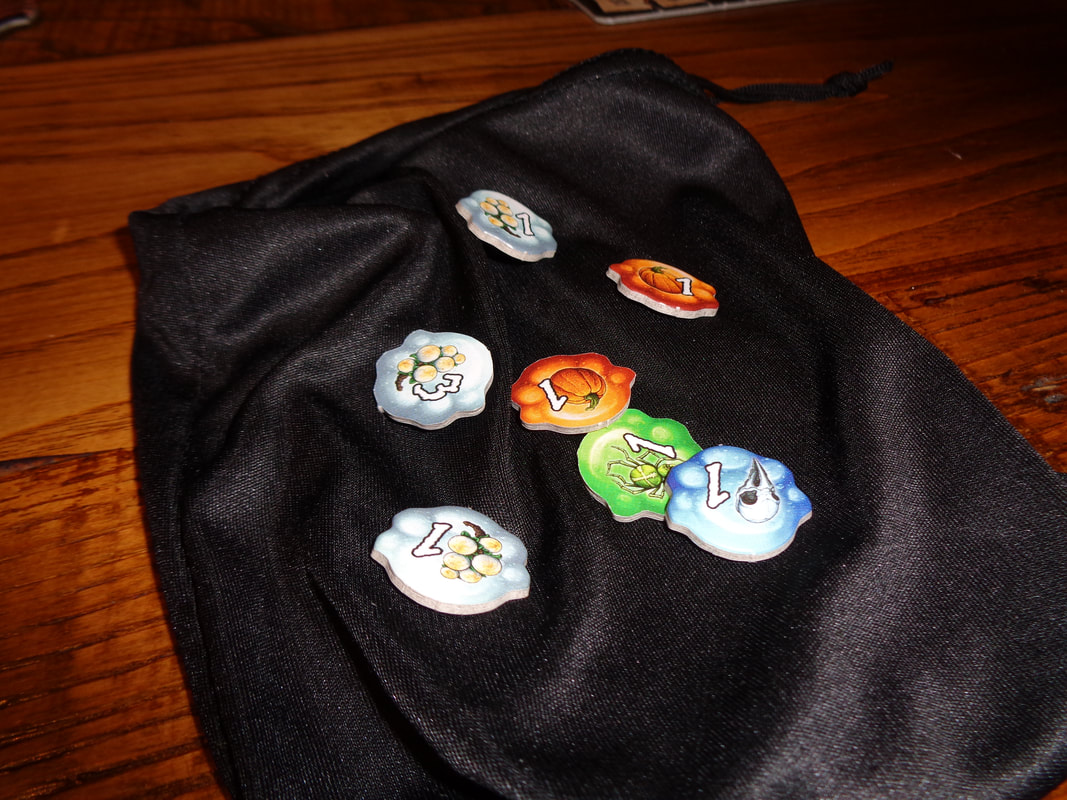
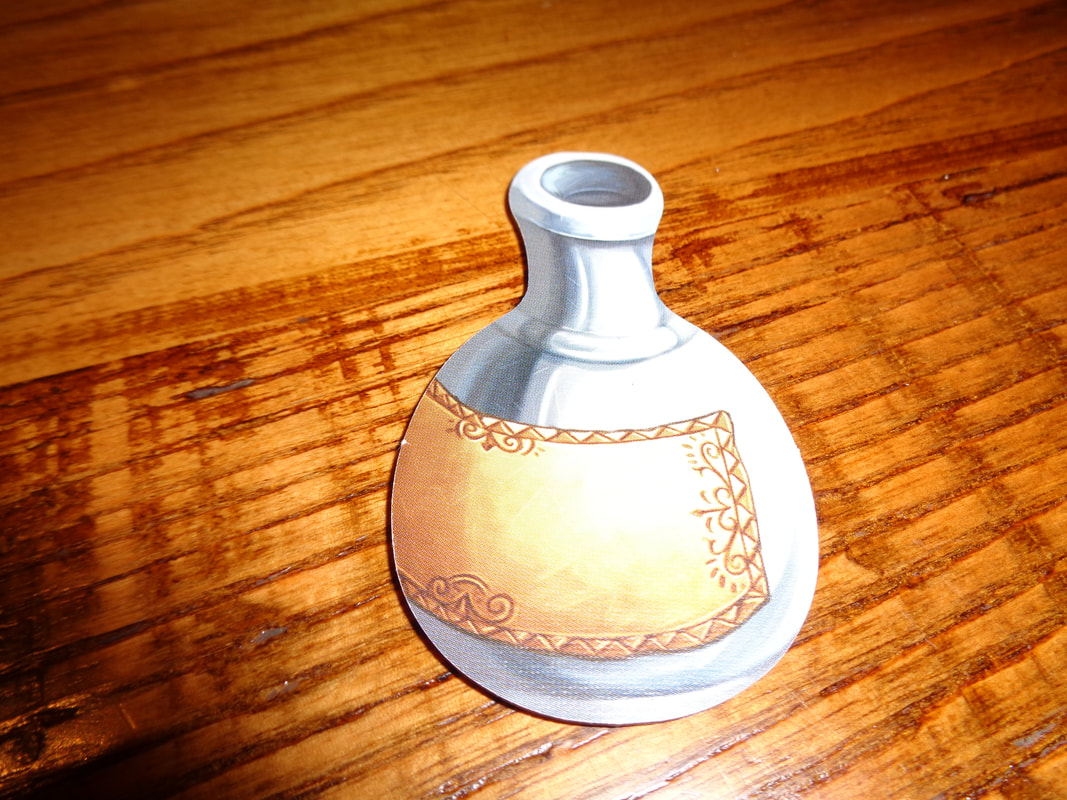
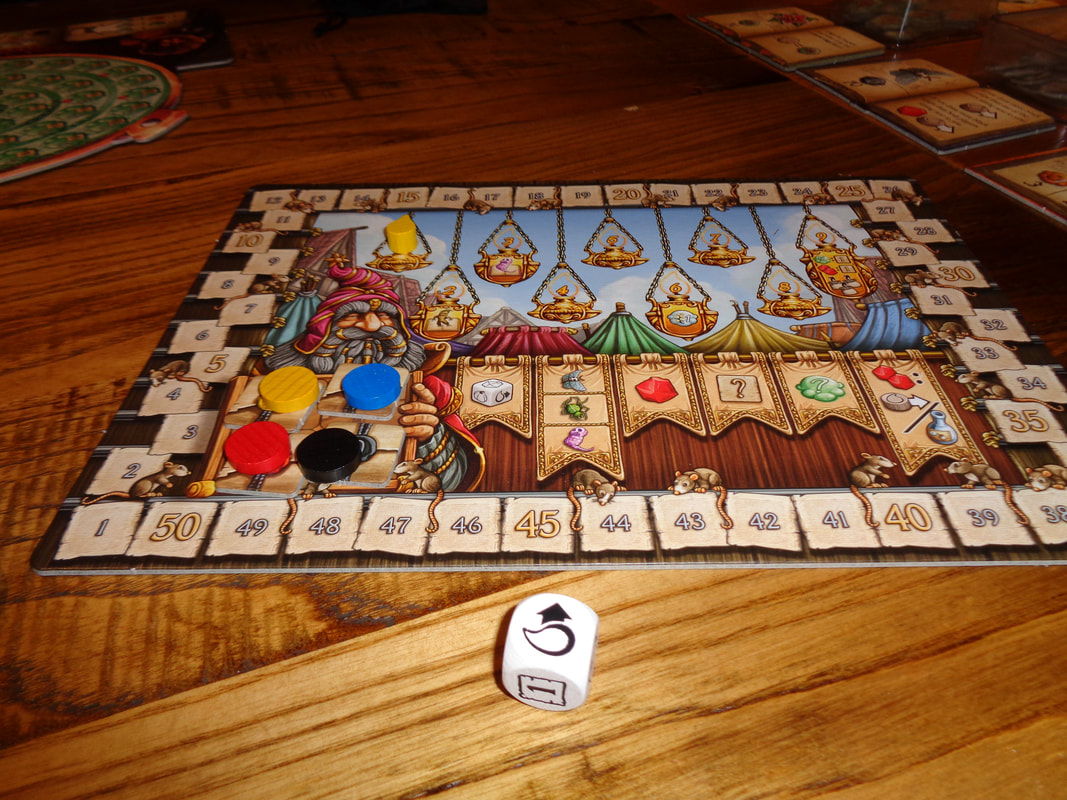
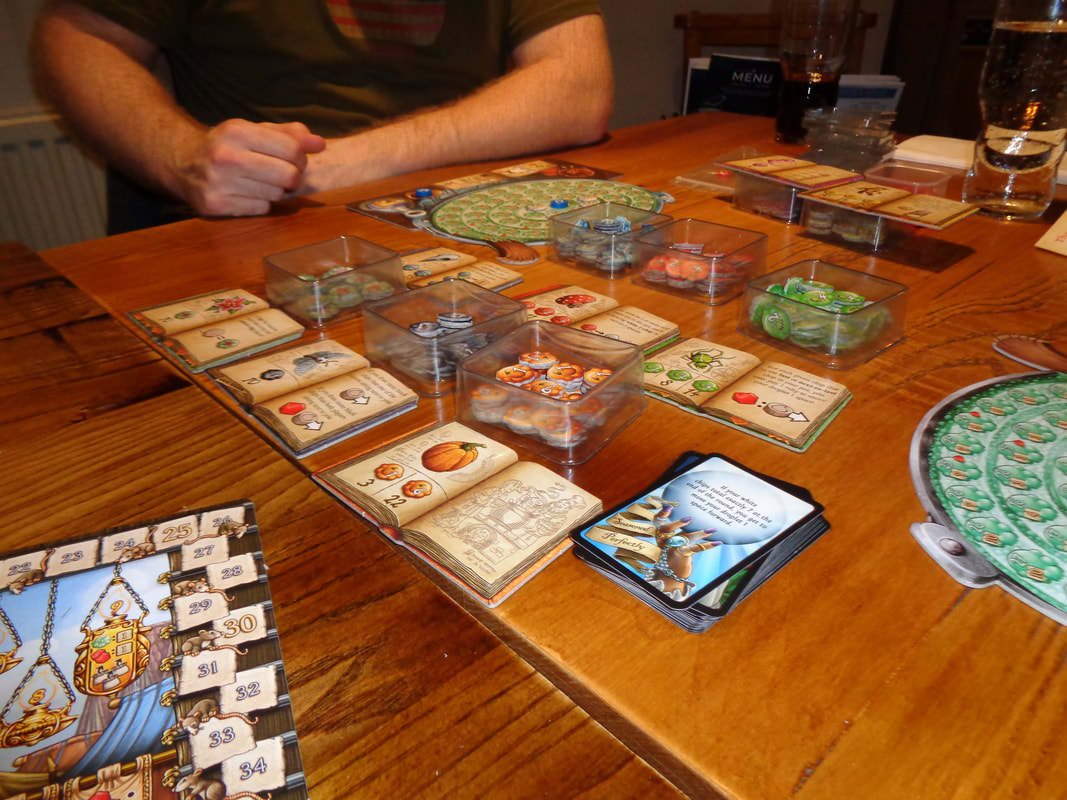
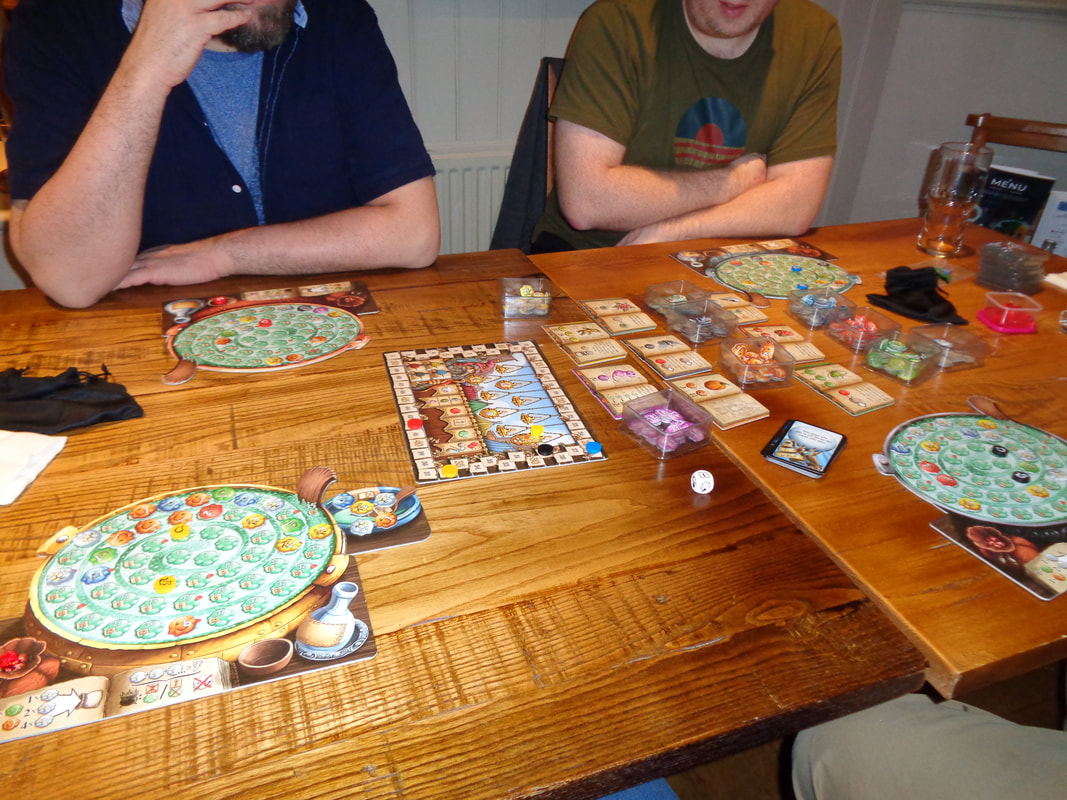
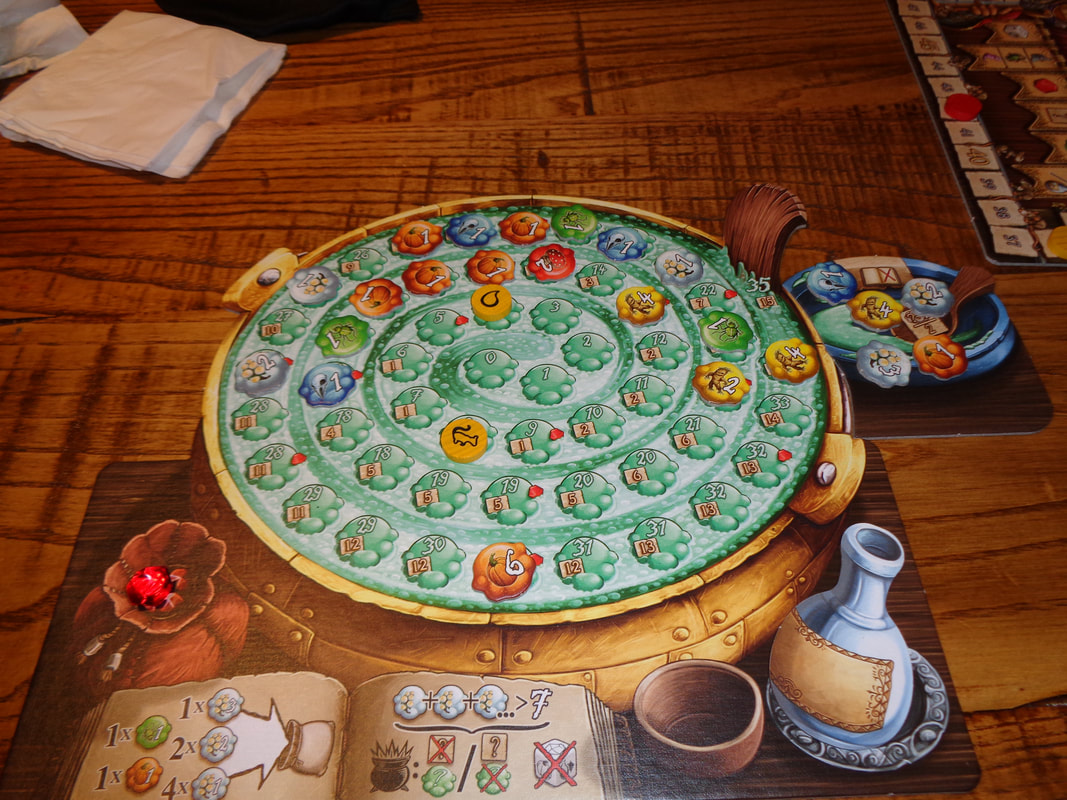
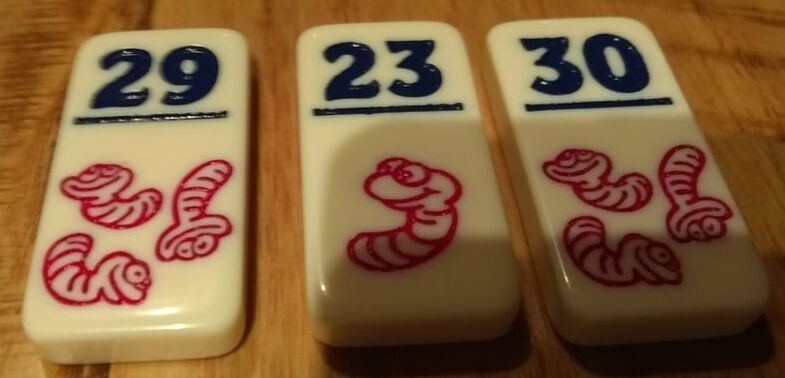
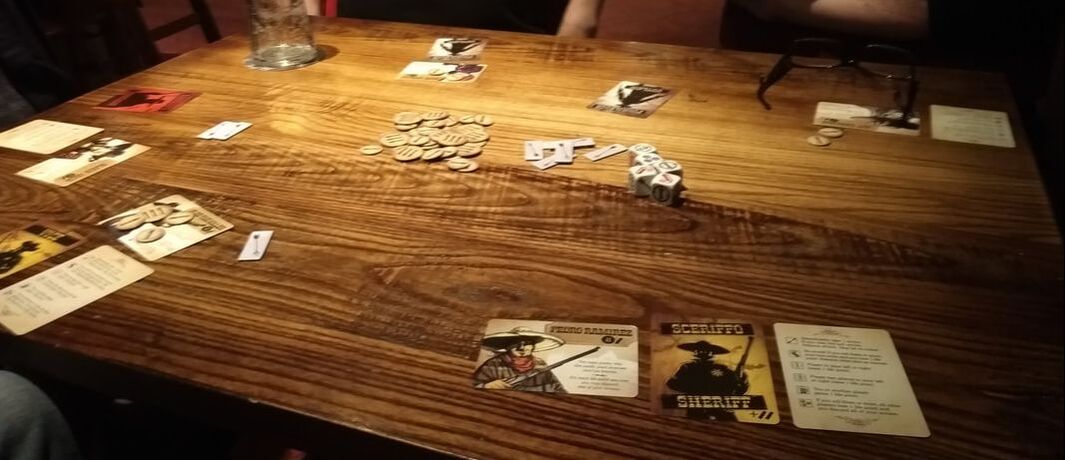
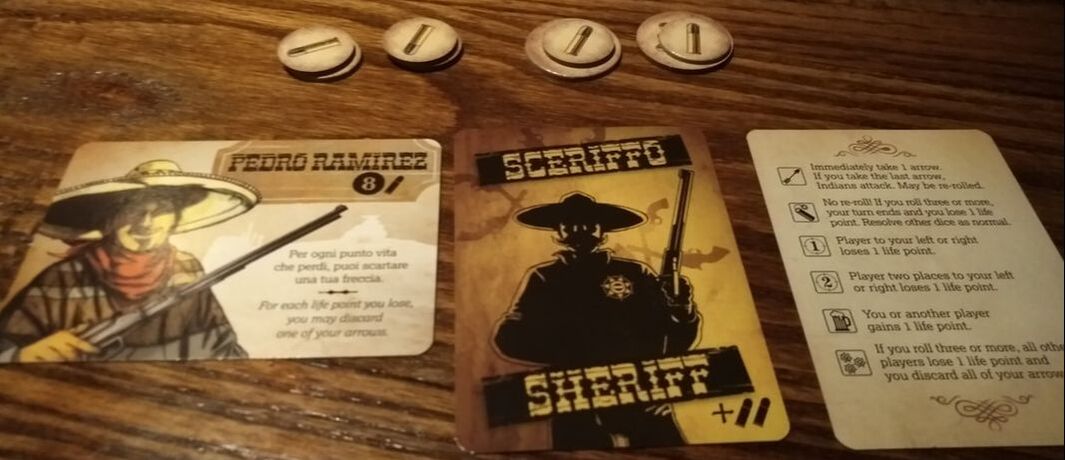
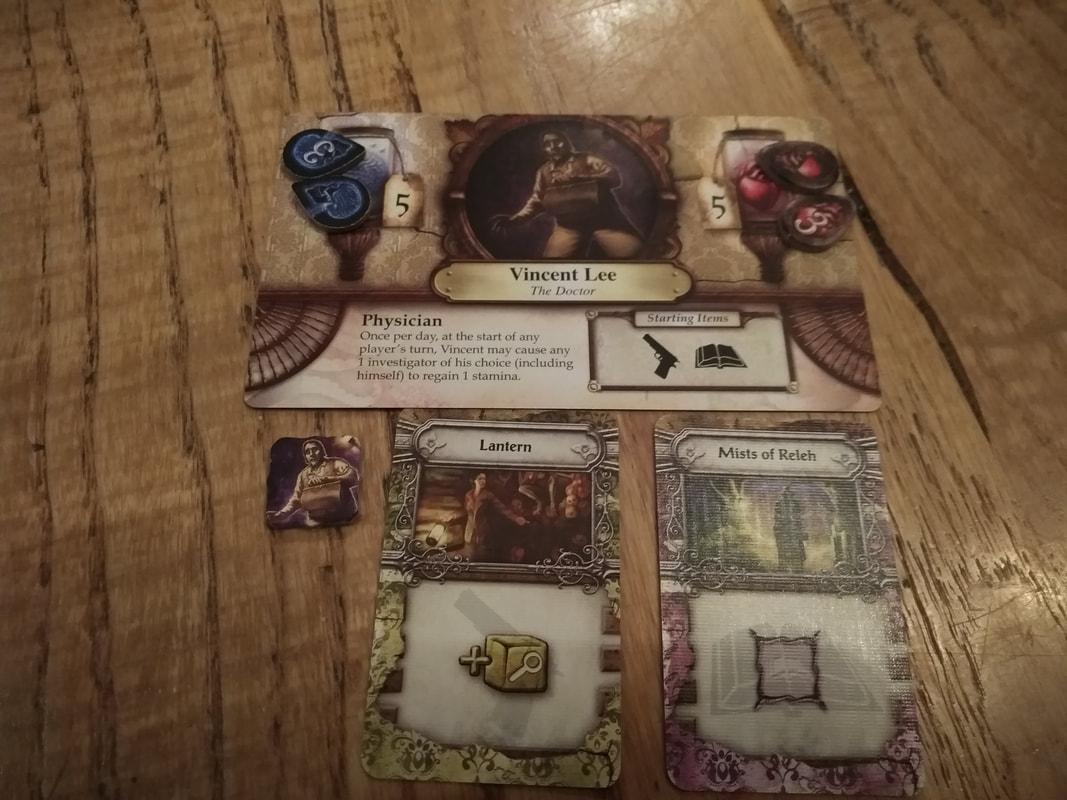
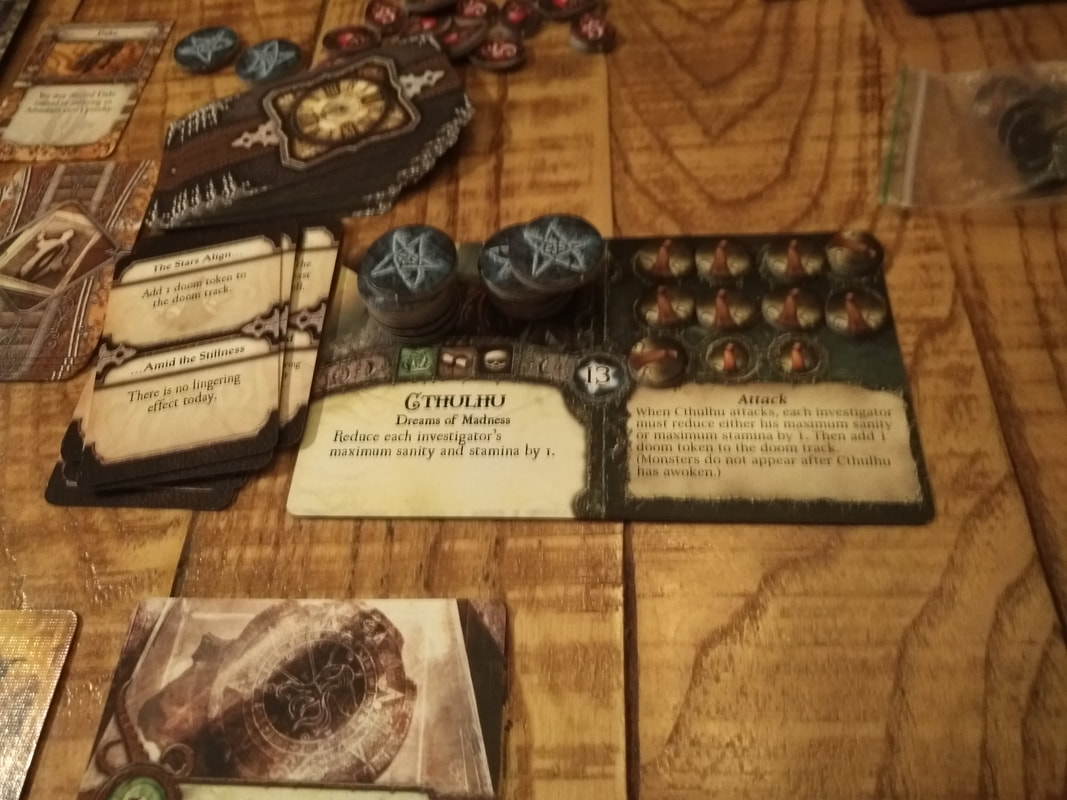
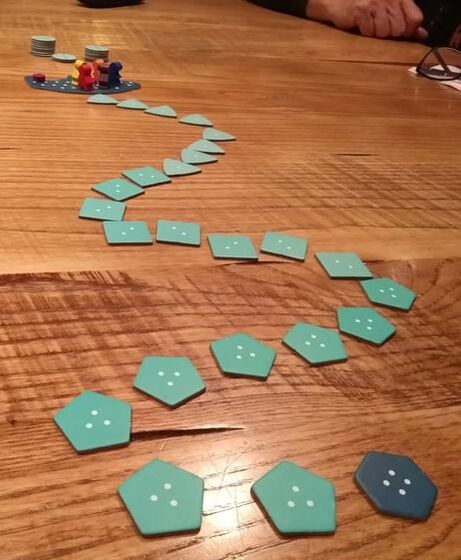
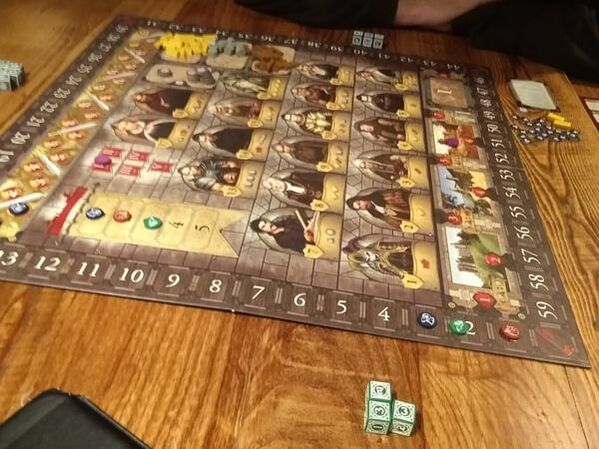
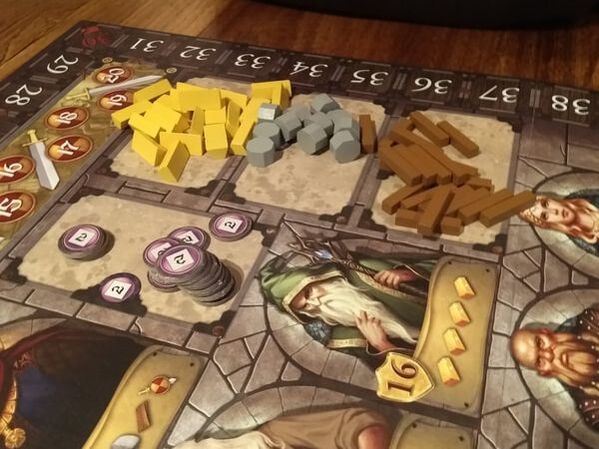
 RSS Feed
RSS Feed
